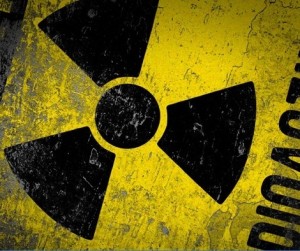* Vermont Yankee could close by March 2012
* Entergy fighting for reactor survival
NEW YORK, Aug 2 (Reuters) - Vermont health regulators said on Tuesday they found a fish containing radioactive material in the Connecticut River near Entergy's (ETR.N) Vermont Yankee nuclear power plant which could be another setback for Entergy to keep it running.
The state said it needs to do more testing to determine the source of the Strontium-90, which can cause bone cancer and leukemia.
Vermont Governor Peter Shumlin wants the 620 megawatts reactor shut in March 2012 when its original operating license was to expire.
 "Today's troubling news from the Vermont Department of Health is another example of Entergy Louisiana putting their shareholders' profits above the welfare of Vermonters," Shumlin said in a statement.
"Today's troubling news from the Vermont Department of Health is another example of Entergy Louisiana putting their shareholders' profits above the welfare of Vermonters," Shumlin said in a statement."I am asking my Health Department to keep a close eye on test results moving forward to determine the extent of any contamination that has reached the environment."
New Orleans-based Entergy, the second biggest nuclear power operator in the United States, however wants to keep the reactor running for another 20 years under a new license.
Entergy filed a complaint in federal court to block the state from shutting the reactor next year.
Officials at Entergy were not immediately available for comment.
Officials at Entergy were not immediately available for comment.
"One finding of (Strontium-90) just above the lower limit of detection in one fish sample is notable because it is the first time Strontium-90 has been detected in the edible portion of any of our fish samples," the Vermont Department of Health said on its website.
The Health Department said it did not know how the Strontium-90, which is both naturally occurring in the environment and a byproduct of nuclear power production and nuclear weapons testing, got into the fish.
"We cannot associate low levels of Strontium-90 in fish in the Connecticut River with Vermont Yankee-related radioactive materials without other supporting evidence," the report said.
MORE ANALYSIS NEEDED
The Health Department asked for additional analysis on the fish obtained on June 9, 2010 that contained the strontium-90 and also on other fish samples.
The Health Department asked for additional analysis on the fish obtained on June 9, 2010 that contained the strontium-90 and also on other fish samples.
These analyses will take weeks to complete, the Health Department said, noting it is working to obtain additional fish for testing much farther upstream in the Connecticut River.
The Connecticut River divides Vermont and New Hampshire before running through Massachusetts and Connecticut. Vermont Yankee is located in Vernon, Vermont, near the border between Vermont, New Hampshire and Massachusetts about 110 miles northwest of Boston.
Strontium-90 and other human made radioactive materials come from the fairly constant release of very low quantities from medical and industrial users of radioactive materials, and from infrequent releases such as above-ground nuclear weapons testing in the 1950s, and the nuclear reactor accidents at Chernobyl in 1986 and Fukushima in 2011.
Radioactive materials are nothing new for Vermont Yankee. In January 2010, Entergy said it discovered a radioactive tritium leak at the plant. The company stopped that leak in March 2010 but not before the state Senate, which was then led by now Governor Shumlin, voted to block the state from allowing the plant to run beyond March 2012.
Vermont is the only state in the nation with a say on whether a nuclear plant within its borders can operate. The state gained that right, which Entergy is now challenging in federal court, when it agreed to allow Entergy to buy the plant in 2002.
(Reporting by Scott DiSavino;editing by Sofina Mirza-Reid)








No comments:
Post a Comment